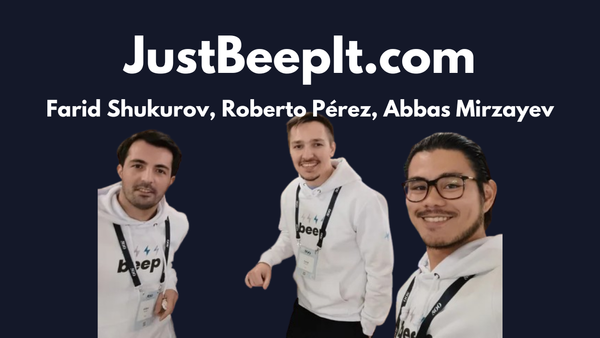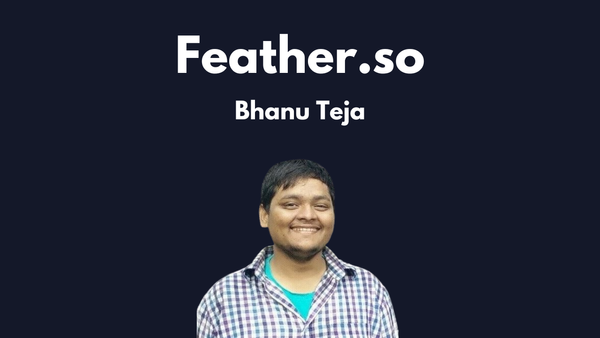How two friends bootstrapped their startup to a $1.4M exit- Tweet Hunter ($312k MRR)

Today, we'll explore the success story of Tweet Hunter, a SaaS platform helping users build and monetize their Twitter audiences. Founded by Tibo Louis-Lucas (@tibo_maker) and Tom Jacquesson (@tomjacquesson) in May 2021, the team expanded when David Molina (@oneJKMolina) joined months later.
They bootstrapped their way to $1.4M in Annual Recurring Revenue (ARR), and they eventually sold Tweet Hunter to Lempire.
Early days…💡
Tibo and Tom met during their MBA studies at ESCP Europe around 2014. Tibo is an engineer, while Tom specializes in digital marketing. They both shared a common dream: creating the next big tech startup.

Their first attempt was with "Pistache", an app designed to motivate kids to do their chores. However, things didn't go as planned, so they sold the app and moved on. After going their separate ways, Tibo worked as a CTO at two different gaming startups, while Tom explored product & marketing roles in retail fashion and app development.
Their paths crossed again in 2019 when Tibo, seeking a change, moved to Thailand and reached out to Tom to invite him to join him in restarting their startup journey. Tom accepted, quit his job, and together they embarked on a new adventure.
They had no product idea, but one problem in mind: Help people find users for their product.
In early 2020, Tom and Tibo created a startup production studio called Pony Express and made a plan to launch as many products as possible in the first weeks of the year.
How me being jealous of @tibo_maker led us to create a $25K MRR product from scratch in 6 months.
— Tom (@tomjacquesson) December 15, 2021
A story
After a while, Tom realized that the few new customers they were acquiring for their products were coming from Tibo’s Twitter community. Thus, he decided to start tweeting himself to attract new users, only to find that he wasn't very good at it.
It turns out, they had a database of tweets from a previous project. Tom tried to use this database as an inspiration to write better tweets, and it worked for him to tweet better and faster. They thought this could help other people, and they decided to turn it into a product.
And that's how it all began.

Building the MVP 🏗️
Just one week passed from the moment they conceived the idea to the launch of the MVP. Tibo handled the tech side, while Tom managed product and marketing. The MVP was simple but workable: a searchable tweet library and a sign-up process with paywall. They priced it at $9 per month, initially considering it ambitious, but it proved to be reasonable. They launched on Twitter and Reddit and quickly got sign-ups and a few paying customers. This success convinced them to go all-in on the project.
Within just three days of testing, they were earning $100 per month. Recognizing increased demand for features, they decided to add tweet scheduling to the product. Additionally, they integrated AI to assist users in generating and recycling their best tweets, setting them apart from similar products. These improvements helped them hit a $5K MRR within 6 months. But to grow more, they needed to plan smartly.

To the moon... 🌔
As soon as they began making money and sensed they had achieved Product-Market Fit, Tibo and Tom understood the necessity of increasing traffic to scale their business. And they considered JK Molina, a Twitter expert with a large following, to help them.
They reached out to JK Molina, offering him a free Tweet Hunter account in exchange for marketing on his Twitter account. After trying it, Molina was excited about the product and proposed joining the company to help them carry Tweet Hunter to the next level. With his marketing expertise and large Twitter following, JK launched a successful marketing campaign, which significantly increased sales from $5k MRR to $15k MRR within three weeks. Tibo and Tom were impressed and made Molina a co-founder.
Following their initial success, Tweet Hunter's revenue climbed from $15k to $25k MRR. They launched on Product Hunt to get noticed and offered attractive deals on Black Friday. Additionally, they created "Best Time To Tweet" as a free tool to gain traffic.

Moving up to $50k MRR, Tweet Hunter ramped up their efforts. They held a Twitter growth contest to attract more users and gave some equity to Creative Investors to build a supportive community. They also started using Google Ads to reach more people and introduced "Tweet Hunter U", a guide to Twitter growth. On top of that, they added new features like auto-DM and even launched something called "Elon Shitpost" to keep things interesting.
As they approached $75k MRR, Tweet Hunter kept the momentum going strong. They continued to create viral threads and finally nailed down a successful newsletter sponsorship. They also adjusted their prices to better reflect the value they were offering. Plus, they introduced "TH Tokens" as a way to reward their users and made improvements to their CRM features. And to top it all off, they kept refining their landing page to make sure it was converting as many visitors as possible.
So... we just hit $1M ARR 🎉
— Tom (@tomjacquesson) May 25, 2022
I'm amazed 🤯 at how fast that happened.
A year ago we didn't even have a product.
I'll soon share how we did that.
But right now it's time to celebrate and give back 🙏
If you're a maker and need money, we have something for you 👇 pic.twitter.com/i539d1B8aB
After reaching $1.4M in annual recurring revenue (ARR), they opted to accept an acquisition offer from Lempire for the same amount, representing a 1x multiple. This might seem low compared to the usual 5x to 10x multiples for SaaS companies, but Tweet Hunter's heavy reliance on the Twitter platform posed a risk of shutdown if access to the API was restricted. To mitigate this, Lempire offered $1.4M upfront plus bonuses tied to revenue milestones, incentivizing growth post-acquisition. Typically, founders join the acquiring company for a transition period after acquisition, so at the moment I am writing this post, Tibo & Tom are still working on Tweet Hunter for Lempire.





